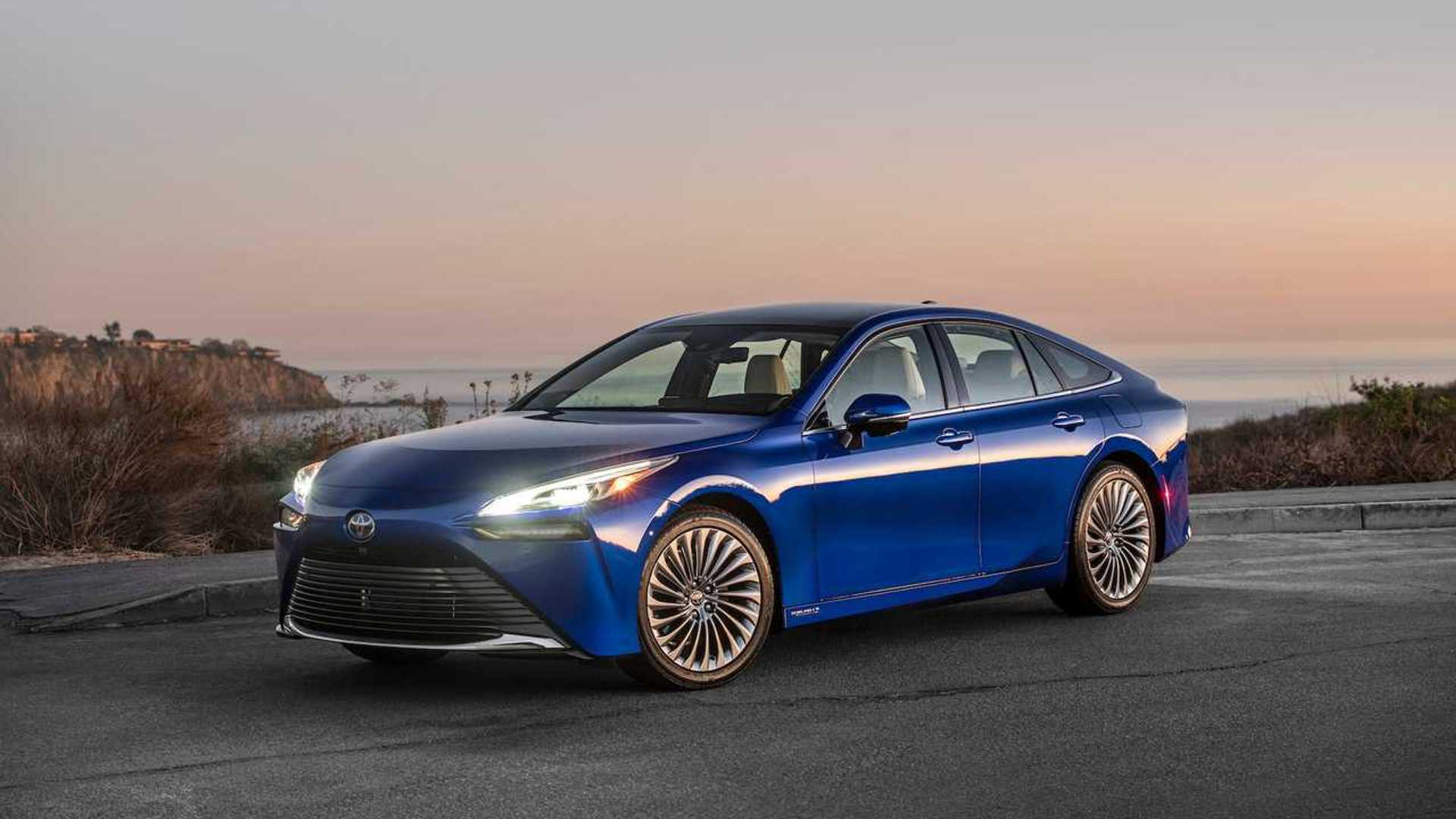
Toyota is offering huge discounts on the 2023 Mirai in California. The range-topping Limited variant of the fuel-cell electric vehicle has an MSRP of $67,115. But after factoring in cash incentives, free fuel, and tax credits, the Mirai becomes among the most affordable EVs on sale right now.
Recently, Cars Direct reported that Toyota sent bulletins to select California dealers, offering a rebate of up to $40,000 on the hydrogen-fueled Mirai. That’s nearly worth the MSRP of an entirely new Tesla Model 3 RWD. Toyota is offering these steep discounts through what it calls Toyota Financial Services (TFS) subvention cash.
Get Fully Charged
Toyota’s biggest discounts on the Mirai.
As a product, the Toyota Mirai isn’t bad at all. 402 miles of zero-emissions range, five minutes of hydrogen refueling time, and nearly all the cabin goodies that you’d expect from a premium sedan. However, the scarcity of hydrogen refueling stations severely limits its prospects.
This brings the price down to $27,000, making it roughly 60% cheaper. On top of that, Toyota also offers complimentary refueling for six years or worth $15,000, whichever comes first after purchase. If you lease the Mirai, it’s $15,000 or three years of free hydrogen refueling.
So over three or six years—depending on your usage—the Mirai’s cost would be approximately $12,000.
That’s not it. You might be able to stack some local rebates in California as well. However, the state’s main EV incentive program, the clean vehicle rebate, stopped accepting new applications in November 2023. The state plans to tweak the eligibility rules to focus on incentivizing low-income individuals and families instead.
All said, there’s a twist. Only about a dozen Limited variants were left with this offer, so finding one would be arduous. There could be more XLE variants on offer—check with your Toyota dealer if you live in California—and those can be had with a $22,000 cash incentive.
Assuming you get your hands on one of these rare highly-discounted models, your biggest problem would be finding hydrogen. Unlike gas and electricity, hydrogen pumping stations are scarce. Early in February, Shell announced that it was pulling the plug on all seven of its hydrogen stations in California.
Shell said supply concerns and external market factors led them to shut down their hydrogen pumps. There are only a handful of hydrogen stations open now in the San Francisco Bay Area and Southern California. If you don’t live in these hotspots, you’re out of luck. Here’s a map that shows the availability and status of hydrogen refueling stations.
Broadly speaking, FCEVs haven’t taken off like BEVs due to their comparatively higher cost of refueling, expensive transportation, and storage, and the fact that hydrogen stations cost a lot more to install than a set of DC fast chargers. And Level 2 chargers cost a fraction of that to install.
But the technology is far from extinct. If at all you have access to a hydrogen pumping station, a $12,000 Mirai isn’t anything to balk at. It offers 402 miles of EPA range with a single top-up, and the features it would offer at that price will make it quite a rare deal. But if you don’t live near hydrogen stations, you better not get carried away with these discounts.

